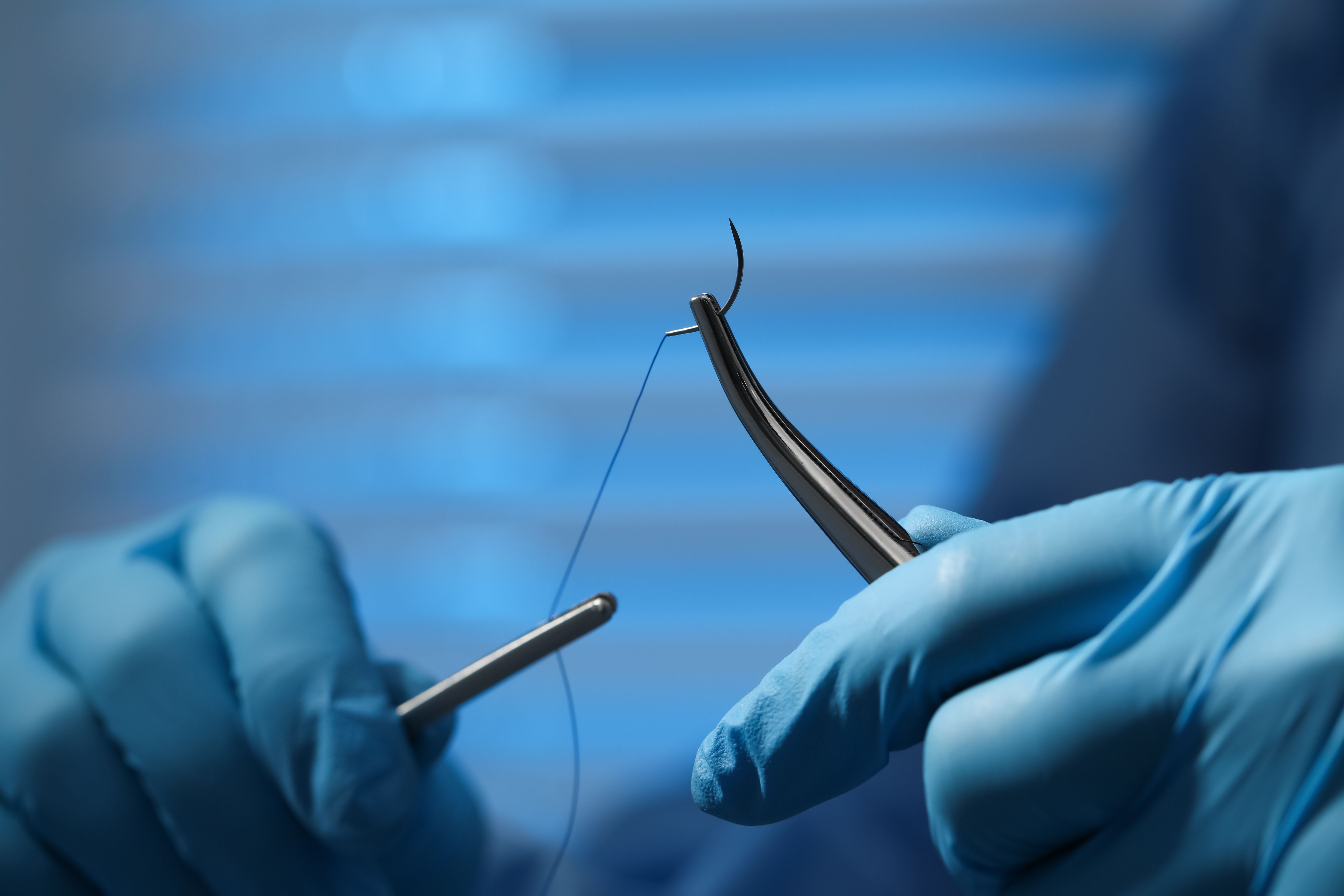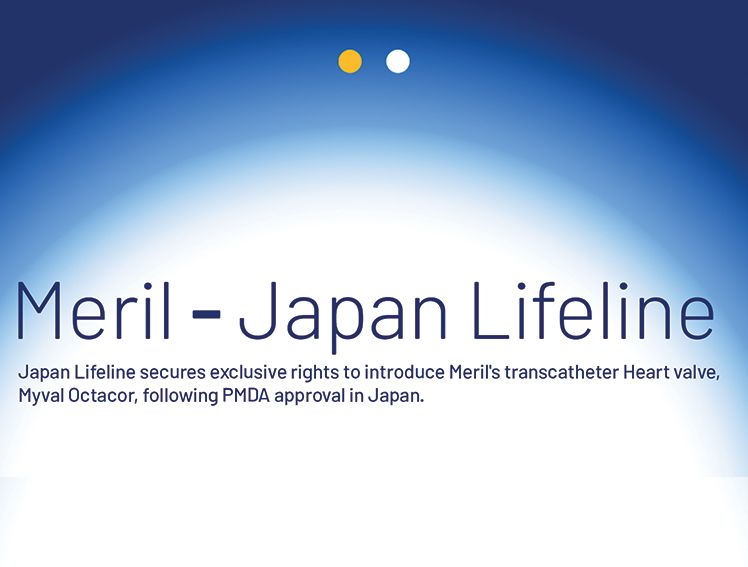
Introduction
Surgical procedures often call for specialized tools like sutures to repair wounds and ensure proper healing.
A surgical suture is a critical tool for holding body tissues together after injury or surgery. Often mistaken for stitches, sutures consist of a needle with an attached thread, while stitches refer to the wound-closing technique. Sutures vary in shape, size, and material and are categorised as absorbable or non-absorbable, with the choice of suturing technique depending on the wound’s nature.
Understanding Surgical Sutures
Sterile threads (surgical sutures) close wounds by supporting healing and holding tissues together. They are classified as:
Absorbable Sutures: Absorbable stitches break down naturally inside the body over time, so they disappear on their own and don’t require removal, reducing the need for extra doctor visits.
Non-Absorbable Sutures: All non-absorbable sutures do not dissolve or disappear from the body and are used for skin closure or high-tension areas, e.g., nylon or polypropylene.
Polyglactin 910 Sutures: Polyglactin 910 stitches are man-made, absorbable stitches made from a special material that is braided for strength. They are commonly used to close soft tissues like skin or muscles. These stitches stay strong enough to support healing for about two to three weeks, then gradually dissolve and disappear completely within two months. They are coated to make them easier for doctors to handle and to keep the knots secure during surgery.
Types of Suture Techniques
Simple Subcutaneous Suture Technique
The most common suture technique for wound closure is the simple subcutaneous suture technique. This technique is performed to release the tension from the wound's surface, thus easing the healing of the skin. In this technique, the surgeon usually attempts to place bulky knots into the deeper parts of the wound. When this technique is used, the body’s reaction to the knot does not occur just under the skin, thus enabling the skin to heal without much disturbance. The simple subcutaneous suture technique can obtain optimal results when short-term or mid-term absorbable multi-filaments are used to suture a wound, depending on its severity.
Best for: Moderate-tension wounds.
Suture Choice: Short- or mid-term absorbable multifilaments
Continuous Subcutaneous Suture Technique
The second most commonly used suturing technique is the continuous subcutaneous technique. Often considered an alternative to the simple subcutaneous technique, it is also advantageous since it is more resistant than a simple suture. Furthermore, continuous sutures may be performed more rapidly than simple stitches. However, like most other sutures, there is the risk that a wound may split or burst open if the suture breaks. The continuous subcutaneous suture technique can obtain optimal results when short-term absorbable multi-filaments are used to suture a wound. If wounds are subjected to high tension, the surgeon may also use mid-term absorbable multi-filaments or mid-term absorbable mono-filaments.
Best for: Low- to moderate-tension wounds.
Suture Choice: Short-term absorbable multifilaments or mid-term absorbable monofilaments
Continuous Subcutaneous Interlaced Suture Technique
Performed as a variation of the continuous subcutaneous suture, the interlaced suture technique provides extra resistance. It retains most of the tension, thus enabling surgeons to perform a tension-free skin suture. The interlaced suture also acts as an anti-slippage suture. In this suturing technique, threads provide higher friction at each passage, giving a firmer hold during suturing. It also ensures that stitches will not loosen when the next passage is performed. Doctors typically use a mono-filament suture as it provides a smoother surface that lets them pull after every passage to tighten the already sutured part. The continuous subcutaneous interlaced suture has high tensile strength, which is extremely useful on wounds under high tension or in highly vascularised tissues, requiring additional haemostasis. This suturing technique can obtain optimal results when mid-term absorbable mono-filament suture is used on a wound.
Best for: High-tension or vascular wounds requiring haemostasis.
Suture Choice: Mid-term absorbable monofilaments
Simple Skin Suture Technique
A suturing technique typically used for closing a wound, the simple skin suture is one in which the surgeon performs separate stitches to hold the edges together. The surgeon takes great care to ensure that once the first knot is performed, it is positioned on one side so that it does not directly lie on the edge of the wound. Doing this ensures that the wound healing process remains undisturbed. Simple skin sutures are easy to place and provide excellent tensile strength. They are less likely to compromise the circulation of blood. That said, it takes more time to place these sutures. This technique can obtain optimal results when non-absorbable or mid-absorbable mono-filaments are used to suture a wound.
Best for: Low-tension skin closure.
Suture Choice: Non-absorbable monofilaments or mid-term absorbable monofilaments
Continuous Skin Suture Technique
Also referred to as the “running suture”, the continuous skin suture technique is primarily used with tension-free wounds, in which deeper sutures are placed to minimise the wound tension. Doctors consider continuous skin sutures because they typically cause less scarring, as they involve fewer knots. Much like continuous subcutaneous sutures, continuous skin sutures are also placed rapidly, but there is also the risk that the wound may burst open if this suture breaks. The continuous skin suturing technique is generally used for securing the perimeter of a split or a full-thickness skin graft. This suture technique can obtain the best results when doctors use non-absorbable or mid-term absorbable monofilaments for wound closure.
Best for: Tension-free wounds or skin grafts.
Suture Choice: Non-absorbable or mid-term absorbable monofilaments
Continuous Intracutaneous Non-absorbable Suture Technique
Continuous intra-cutaneous non-absorbable sutures are preferred by patients concerned about the aesthetic results of their scars. The surgeon typically uses the continuous intracutaneous non-absorbable suturing technique only in areas with minimal stress, for instance, in areas where the tension is eliminated with the help of deeper sutures. This suture comprises a non-absorbable monofilament that runs within the skin. The doctor places strips over the wound upon completing the intracutaneous suture. The doctor removes this suture by pulling on either end as the skin heals and regains strength to close the wound. This suture also has a smooth surface, ensuring it easily slides through the skin.
Best for: Low-tension areas with aesthetic concerns.
Suture Choice: Non-absorbable monofilaments.
Continuous Intracutaneous Absorbable Suture Technique
Doctors also perform intracutaneous sutures with the help of absorbable sutures. The advantage of opting for this suturing technique is that it can be performed in one sitting, and the patient typically does not need to revisit the doctor to extract the suture. This is attributed to the fact that the tissues slowly degrade this type of suture. Once again, the surgeon places strips over the wound upon completing the continuous intracutaneous absorbable suture technique. Note that this technique is only used to suture wounds in areas without tension, at the skin level. Surgeons typically use mid-term absorbable mono-filaments to obtain the best results using this technique.
Best for: Tension-free skin closure.
Suture Choice: Mid-term absorbable monofilaments.
Mattress suture technique
The suturing technique used when wound edges are not close to each other, thus allowing tension-free healing, is known as the mattress suture technique. Surgeons also use this technique to ensure the eversion of wounds and minimise substantial wound tension. These sutures are predominantly used in areas where the edges of the wound tend to invert, for instance, wounds on concave surfaces. The mattress suture technique is usually limited to areas in which cosmetic results are essential. This suturing technique has two variants, i.e., horizontal and vertical mattress suture techniques. The horizontal suture helps minimise wound tension and close dead spaces. It also facilitates wound edge eversion. On the other hand, the vertical suture is regarded as one of the best suturing techniques that ensures wound eversion while reducing wound tension significantly. Horizontal and vertical suture techniques can obtain optimum results when surgeons use non-absorbable monofilaments for wound closure.
Best for: Concave surfaces or high-tension wounds.
Suture Choice: Non-absorbable monofilaments for optimal eversion.
Corner sutures
There will be several incidents when the wound edges are not straight or parallel to each other. Sometimes, one may need to get stitches in an area where the edges are twisted or irregular. A corner pattern may be forming, and the surgeon may need to perform the corner suture technique to close or suture a wound surgically. Doctors take extra care to ensure that the corner is sutured correctly so that necrosis of the tissues can be avoided. They avoid performing simple stitches in such areas since it can increase the risk of necrosis. Instead, use an intracutaneous suture, which is knotted on the surface, on the outer side of the wound. Depending on its severity, the corner suture technique can obtain optimal results when using non-absorbable monofilaments to suture a wound.
Best for: Complex, angular wounds.
Suture Choice: Non-absorbable monofilaments.
Meril’s Advanced Suture Solutions
Meril offers a wide range of sutures such as the MITSU polyglactin 910 sutures, the MITSU FST sutures, the MITSU C+ surgical sutures and the MITSU AB Anti bacterial sutures.
MITSU Polyglactin 910 Sutures: Braided, absorbable sutures for general soft tissue approximation, with predictable absorption in 56–70 days.
MITSU AB Antibacterial Sutures: Super-coated with Triclosan to reduce surgical site infection, application for subcutaneous and skin sutures. Retains 75% knot tensile strength for up to 14 days, 50% knot tensile strength for up to 21 days and provides complete mass absorption within 56 to 70 days.
MITSU C+ Sutures and MITSU FST: Specialised to facilitate absorption of the suture intraoperatively to assist in tissue handling during surgical application.
Key Considerations for Suturing
Minimising dead space, reducing tension, and supporting healing make effective suturing.
Factors influencing outcomes include:
Absorbable sutures such as polyglactin are used internally, as the degradation is predictable.
High tension wounds require heavy-gauge sutures like Meril’s MITSU AB.
A person’s overall health can affect healing, so doctors choose the type of stitch based on each individual’s condition.
Conclusion
Surgical stitches, especially absorbable ones like Polyglactin 910, play an important role in closing wounds effectively. Meril’s advanced sutures, MITSU and MITSU AB, offer strong support, lower the chance of infection, and dissolve at the right pace, helping surgeries heal better. Using the right stitching method and materials helps wounds heal well with fewer problems.
SHARE NOW



